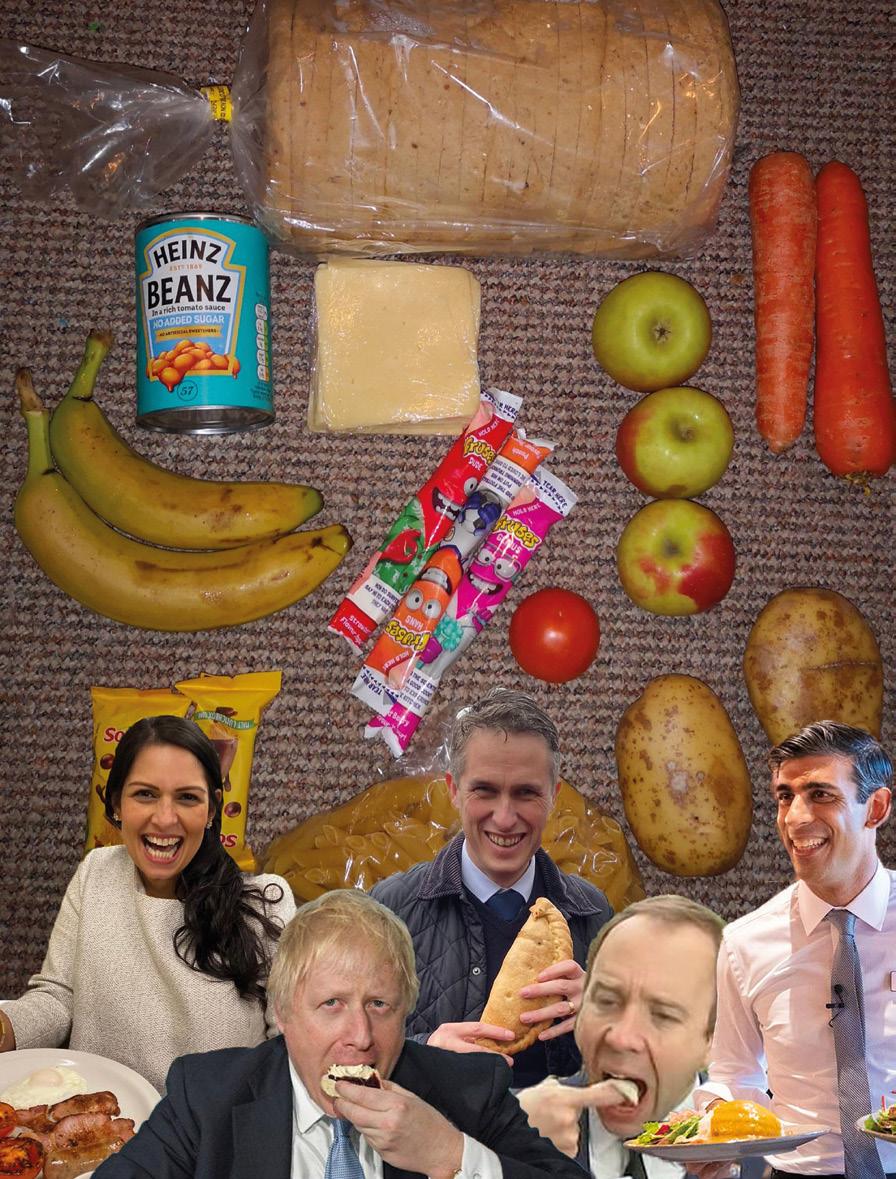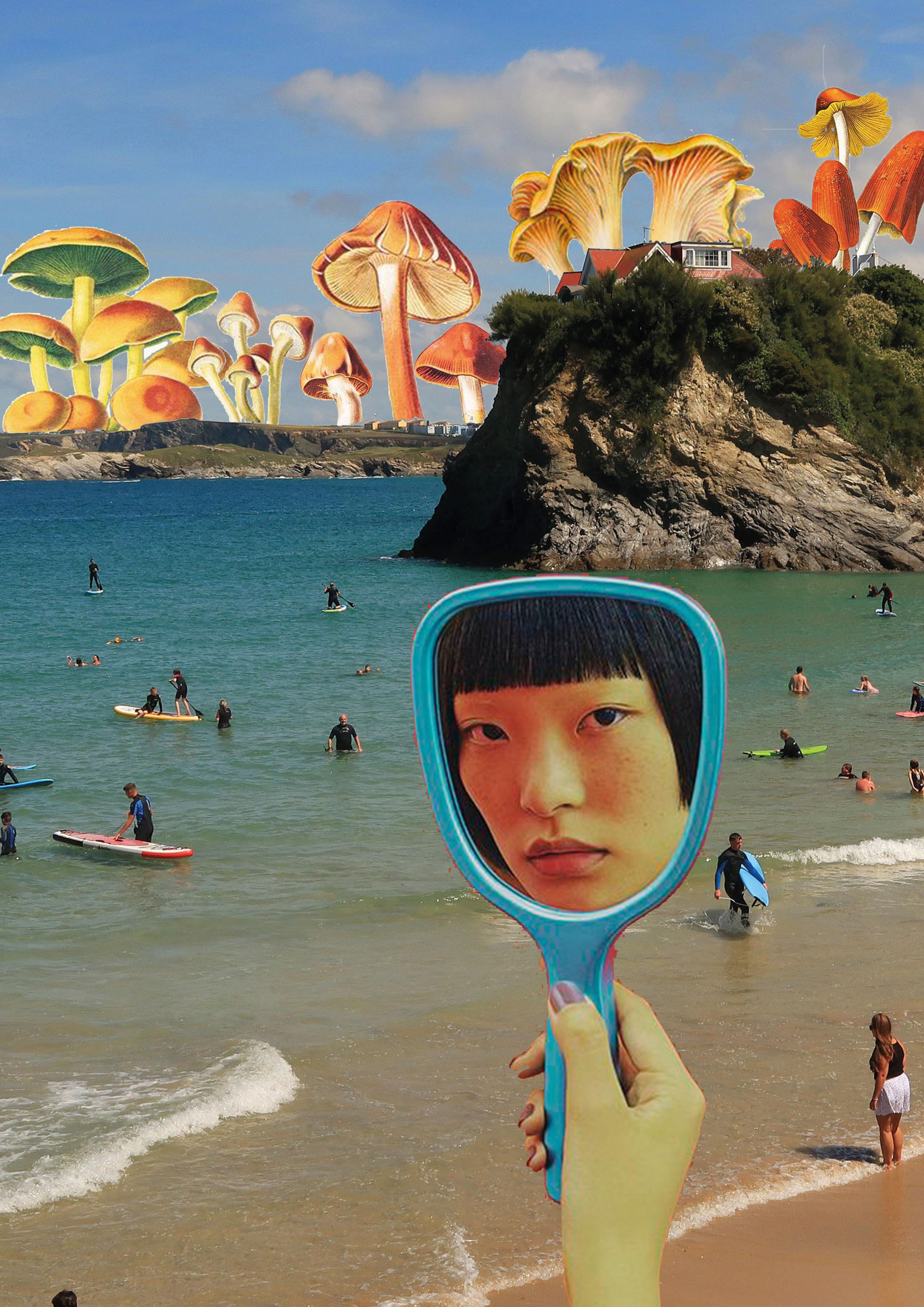
8 minute read
FILM: A YEAR DISRUPTED
The film industry has endured cataclysmic disruption as a result of the Covid-19 pandemic. Cinemas were forced to close due to lockdowns, commercial giants lost their edge, and blockbuster films saw release dates postponed time and time again.
“Initially I think no one foresaw the depth and length of this crisis to cinema,” says Rebekah Fozard, manager of Hebden Bridge Picture House, reflecting on her experience of managing a cinema during the pandemic.
Advertisement
“We announced our closure on the 17th of March because the previous day we only had four people in the audience when usually our average attendance for March is well over 80. We could see people were feeling the fear and we wanted to be responsible. We closed a week before lockdown.”
Whether by choice or not, come the end of March, all cinemas in the UK were forced to close under lockdown restrictions. From the first UK lockdown back in March 2020 to the present, cinemas across the country have been in a state of limbo.
Last year saw UK cinema admissions fall to a staggeringly low 44 million down from 176.1 million in 2019, according to the UK Cinema Association. The financial ramifications of the pandemic have severely damaged the UK film industry. Box office revenue also fell from £1,251.8 million to a mere £296.7 million in 2020, totalling a loss of 76.3%.
There was much more at stake than financial losses affecting UK cinemas. Rebekah Fozard explains: “The whole way through, our audience has been sad and worried for us, not angry. They’ve missed us. I put tickets on sale for October, November, and December. We sold out our Christmas Eve show of It’s a Wonderful Life and people were like ‘Oh thank god for some normality, we always saw that at your cinema.’”
This normality was short-lived. When the second lockdown was announced, the cinema had to refund everyone and close its doors. “This was when we realised we had to find a way to do virtual screenings, because it’s not just about income, it’s also about having something to engage with your community with. [For us] that medium is film,” said Rebekah.
According to the BFI, an estimated 19,297 people worked in UK cinemas before the pandemic. The closure of workplaces due to the pandemic left thousands furloughed and many out of work and without financial security. The decisions made by cinemas during this unprecedented period, to ensure their survival and the survival of the British film industry, was difficult but necessary.
The financial statistics make for grim reading and you would be right to assume that many UK cinemas are struggling to cope, big or small. In October, Cineworld announced that due to financial instability their cinemas would close temporarily, leading to 5,500 UK employees having to take ‘temporary redundancies’. Commercial cinemas such as Cineworld, rely heavily on the release of blockbuster films to entice customers. These films never came and the cinema had to close.
After the financial crisis caused by the closure of cinemas, film production companies were left with a dilemma - release their upcoming blockbusters to cinemas and gamble on hitting their financial targets or delay their releases until they felt the industry was secure enough. Unfortunately, most of the planned big blockbuster films were delayed. Most infamously was the highly anticipated James Bond film, No Time to Die. Originally due to hit screens in April 2020, it was delayed until November 2020. This left a huge dent in the industry with cinemas having to let staff go and, in some cases, close their doors. The film’s release was then postponed a further two times and is now set for release in October 2021, the effects of this, as well as the other films that have had their releases delayed, have been unequivocally damaging to the industry. Cinemas are hemorrhaging money due to the postponement of blockbusters, and naturally, those employed at cinemas are left feeling the burden.

Charlie Smith was employed at Everyman Cinema, a chain of luxury cinemas in the UK, during the time No Time to Die was initially postponed.
“It was really quiet in the cinema and we were nervous about whether the films were going to be released or not because we were struggling with hours already,” says Charlie. “[When the films] were cancelled it led to me not getting any more hours and eventually I was let go.” On July 5th, 2020, the Government announced a £1.57 billion Culture Recovery Fund rescue package for cultural organisations to help the sector survive. Alongside a series of measures announced earlier in March 2020, the Culture Recovery Fund was implemented to help save these sectors, maintain jobs and keep businesses afloat. Tony Mundin is the owner of four family-run independent cinemas, including The Savoy Cinema in Heaton Moor, Stockport and The Rex in Wilmslow. Mundin says this funding enabled cinemas like his to ensure they meet a break-even point until the end of summer.
“Essentially the government has provided a mechanism whereby independent cinemas will break even till the end of June,” said Mundin. “I can’t really complain about that. There’s a lot of restaurants and hairdressers that will lose a lot of money from now and until then. Our business has been protected so I am astonishingly grateful for that.” Despite what has been a terrible year for the industry there have been positives and there is hope for the film industry’s future. Independent cinemas have been attracting new audiences with more people watching independent and UK made films. With sell-out screenings, indies have accumulated waves of new customers. An example of the success of independent cinema is Rose Glass’s British feature, Saint Maud, released October 23rd, which topped the UK box office following its release. Pre-pandemic saw the past decade averaging higher box office admissions than the previous, showing there is still a growing desire for the magic of the big screen. Tony Mundin and others like him are hopeful for the future of cinema: “We’ve got to think about the future of the industry and sustaining it. Look, I’m procinema, it’s what I do. I love it, I genuinely love it and I don’t think it’s ever going to be replaced and we’ve got a future.”
Words - Tom Collinson Design - Esme Greaves


TEARING THE WORLD TO SHREDS
Manchester collage artist Clementine Lawrence reflects on her artform in the age of disruption.
Football matches in empty stadiums are being broadcasted with recycled cheers from happier times. Lancashire goats are making a small fortune with cameo appearances in video conferences. What doesn’t belong together grows together in this pandemic. As the world is torn to shreds, our attempts to patch it back together sometimes yield results of a surreal beauty. This disruption of reality as we know it is reflected in the collages of Manchester artist, Clementine Lawrence.
Clementine, 21, is a photographer, collagist and social anthropology student based in Manchester. aAh! speaks to Clementine about surreal children’s books, political art, and creativity as a last resort to stay sane when nothing makes sense.
Originally you were a photographer. How did you get into collages?

Some of the first art I did when I was younger was collage. My dad is an art teacher. He had books around the house and I had seen some cubist things, so I used to cut up magazines and make weird distorted faces. I like how accessible and easy it is. I like cutting things up that haven’t previously gone together and sort of mushing them all together in a surrealist way. I still do photography. But because I like photographing people I used to just go out and there were loads of people around and I photographed them. Obviously that is not the case anymore, so I kind of moved into other things.
What does it mean to you to be creative in a pandemic?
To me being creative in a pandemic is the time I find a space where I can sit and create whatever it is I want to, without any pressure of ‘I have to produce something’. I find being creative very grounding. I often feel quite anxious or stressed, so being creative pulls me back to earth a little bit where I can take time to clear my head and just do something that brings me a lot of joy.
Would you say it’s a way to keep some sanity in these crazy times?
Yeah, exactly!
What inspires you to create your collages?
I like a lot of children’s books and illustrations. There is an illustrator called Shaun Tan. He does these really weird surrealist illustrations where things in the landscape don’t look like they should be there. And then I just look at surrealist art. I scroll through the Internet, I look in books and then I play around in Photoshop and piece things together until I get something that I like.
Your images are surrealist – with one exception. Can you tell us more about your school meal collage?
Oh, yeah! I was thinking of that image of Ed Miliband where he is eating that sandwich. And then I started thinking about that in relation to the school meals. I remember reading about how taxpayer money actually goes into funding meals at Parliament. I was thinking that is so ironic and I just wanted to make a collage about it. I made that one very quickly because I was very annoyed about it and it sort of came out through that. I would like to create more work about current issues.
Do you have a vision of where you want to go with your art?
I’ve been selling my prints and I was actually surprised how many people like them. I would send them to people I didn’t know as well which was really exciting. I’m not sure where I want to go. I do it as a sort of refuge at the moment because I can’t really do a lot of other things. I feel like just making things creative makes me feel productive and it keeps me going a little bit.
Follow Clementine Lawrence on Instagram @clementinesphotos














